Hands-On Spelling Activity with Dot Stickers
Affiliate and Referral links are used below to promote products I love and recommend. I receive a commission on any purchases made through these links. Please see my disclosure policy for more details. As an Amazon Associate, I earn from qualifying purchases.
I'm always looking for ways to make academic tasks more hands-on with my children as they get older. I have a 4th grader and a 1st grader now! And just because dot stickers are used in preschool or kindergarten a lot, doesn't mean we can't use them for older children. Today I'm sharing a hands-on spelling activity using dot stickers.
Table of contents
Both of my children have a set of spelling words that they review as part of their English and grammar lessons at home (we homeschool!). I wanted to add in some hands-on spelling practice that was more than just using flashcards or writing out the spelling words on a piece of paper.
Both of my children can always benefit from fine motor practice and that's why I love using the dot stickers for this.
Let's look at what you need for this activity. Then I'll get into the skills we practiced and some adaptations you can do depending on your child's skill level and the type of environment they are in.
Hands-On Spelling Activity with Dot Stickers Supplies
You will need:
- A packet of colored dot stickers – I ordered mine from Amazon, but you could get them from any education supply store or aisle in the store
- Black marker
- Spelling word list
- Paper
Directions:
I had our spelling words written out on index cards, but if you are getting a list of spelling words from school, just use those.
Then, I wrote out each word, one letter per sticker on the sheet of dot stickers. I'll talk more about ways to adapt this later on.
We used one sheet for my daughter who is in 4th grade and two sheets for my son who is in 1st grade.
Each child received a blank piece of paper and I gave them their corresponding sheet of words. As I called out each word, they scanned the page to find the word and then peeled off the letters needed to create the word on their sheet of paper.
For Therapists and Educators…
Ask your student's teacher to provide you with a list of their spelling words for each week or periodically throughout the year. You can make this part of your therapy sessions while helping to support academics in the classroom.
This would make an excellent “push-in therapy” activity for an entire class to complete.
Practicing Spelling Words with Dot Stickers Skills
There are so many amazing fine motor and visual motor skills being used and practiced with this activity. Some of those include:
- Visual scanning – Visual scanning is the ability to use their eyes efficiently, quickly, and accurately to view information and actively explore relevant information. In the case of this activity, they are looking for the letters or words that you give them to spell from the spelling list.
- Pincer strength and grasp – Pincer grasp is using the thumb and index finger together in order to pinch an object. Peeling the stickers is a great pincer strength activity.
- Bilateral coordination – Bilateral coordination is being able to coordinate both sides of the body together in order to complete a task. In this case, the child needs to hold the dot sticker sheet and peel the sticker off at the same time.
- Crossing midline – Crossing midline is the ability to visually and physically cross the middle of the body to the opposite side to complete a task. In this case, the child is scanning the page for the letters and then using their dominant hand to peel the stickers and reach across the place them on the paper.
Adaptations for Hands-On Spelling Activity with Dot Stickers
There are a variety of ways you can adapt this activity to fit your child's needs. Here are just a few I thought of.
1 || Use lined paper for an added visual – if your child has trouble keeping the dot stickers lined up to make a word, put a line on the paper for them to follow.
2 || Use circles on paper for added visuals – if they need more visuals for keeping the stickers lined up, you could draw a circle for each sticker, having the same number of circles per letter in the word.
3 || Write only 1 to 2 words at a time – for children who might get visually overwhelmed by all the words and letters, just write out one to two words at a time on the dot stickers.
4 || Increase the challenge by mixing up the letters on the dot sticker sheet – instead of writing the letters for each word next to one another, spread the letters out throughout the page of dot stickers. This increases the visual scanning practice on the page and challenges the child to build the word with letters on the page, instead of scanning for the actual word on the dot sticker page.
5 || Use the same color of sticker for each word – I did this as best as I could for my own children, some of the words were longer than what I had. But having the word on the same colored sticker makes it a little easier to scan and find the word. You can also provide a verbal cue of what color the word is on for a child who may be struggling to find it.
6 || Mix up the letters and sticker colors – To really challenge a child who may need it, you could randomly write the letters throughout the sticker page, instead of all in a row on the same color. This will also encourage them to build the word, finding the letter they need to spell it, rather than just scanning for the whole word on the page.
What adaptations would you make to help or challenge a child with this activity? Leave your ideas in the comments below!
You May Also Like:

Heather Greutman, COTA
Heather Greutman is a Certified Occupational Therapy Assistant with experience in school-based OT services for preschool through high school. She uses her background to share child development tips, tools, and strategies for parents, educators, and therapists. She is the author of many ebooks including The Basics of Fine Motor Skills, and Basics of Pre-Writing Skills, and co-author of Sensory Processing Explained: A Handbook for Parents and Educators.

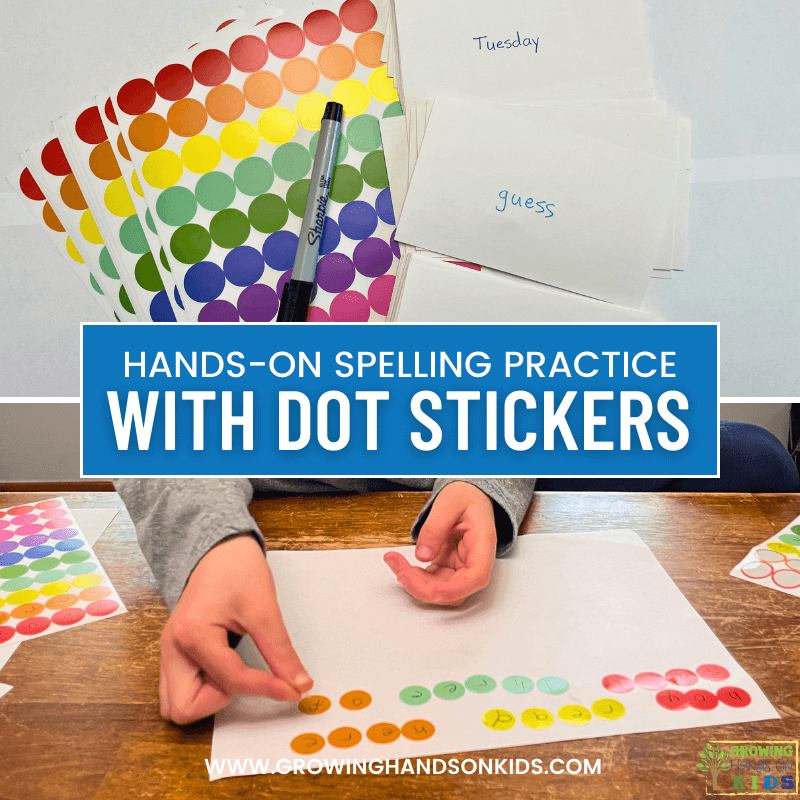
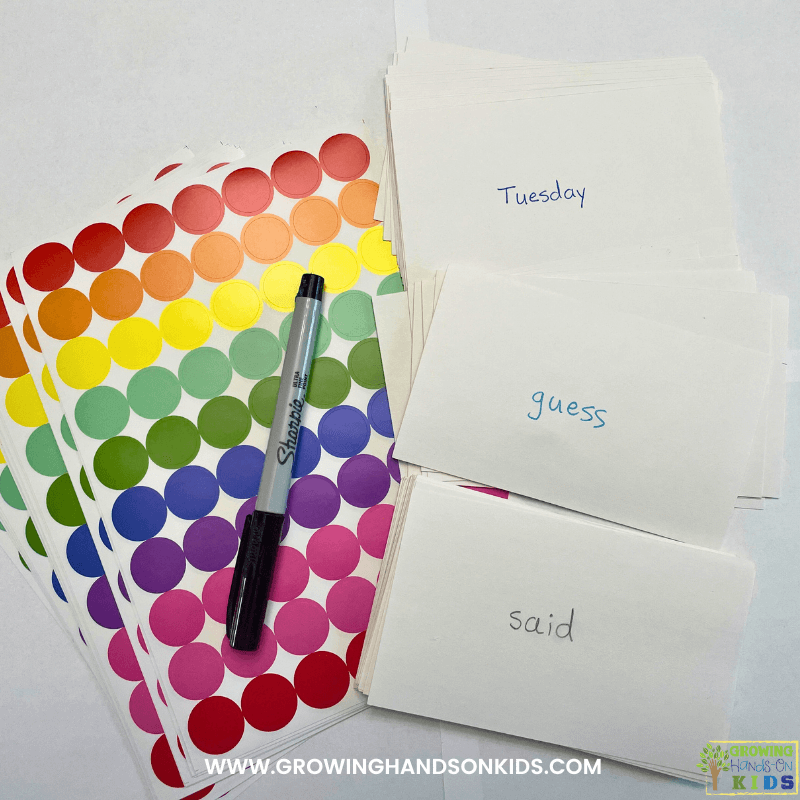
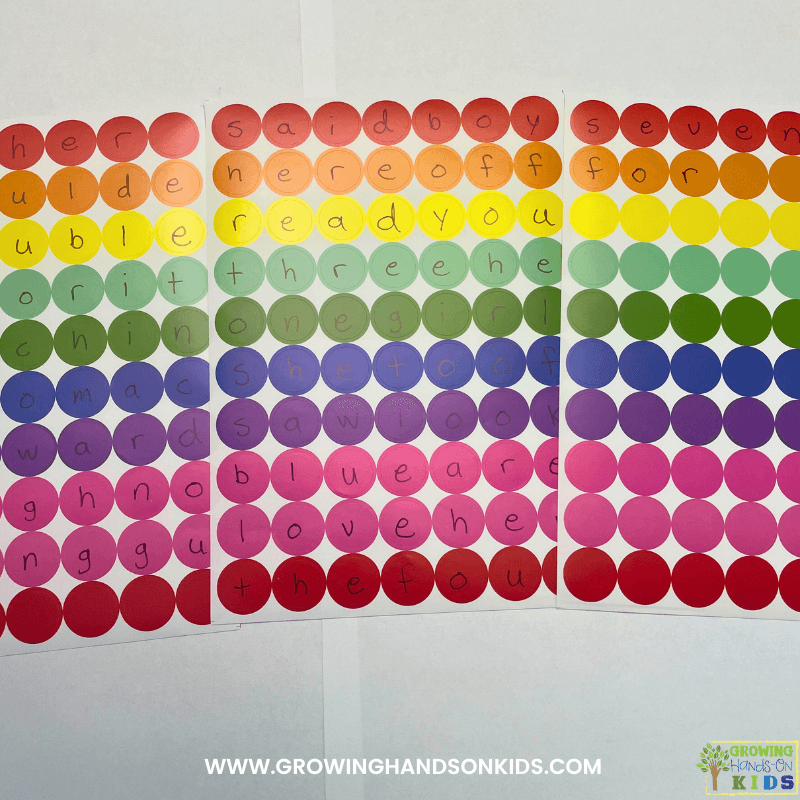
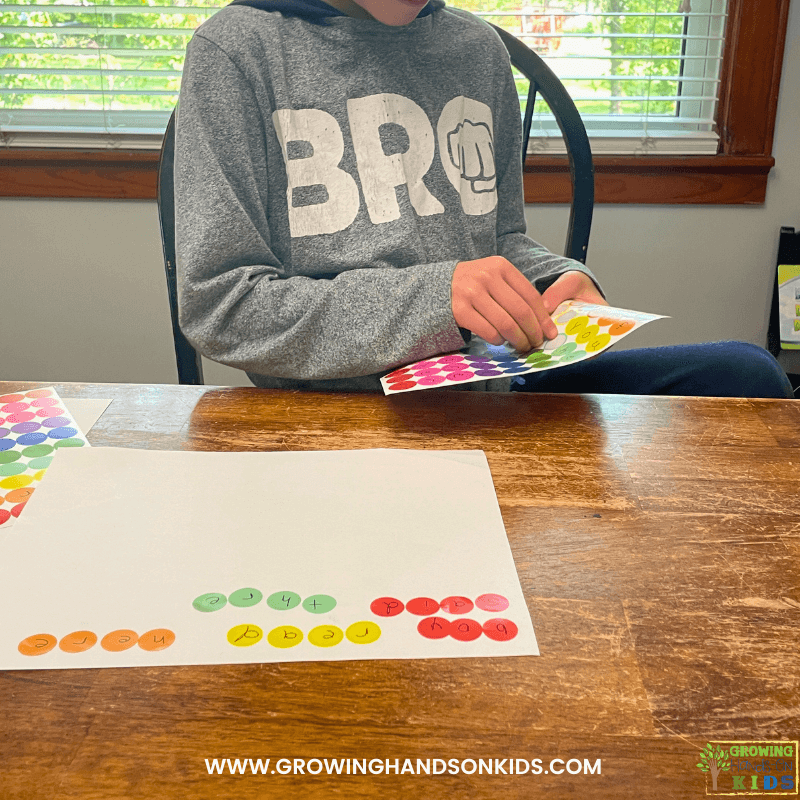
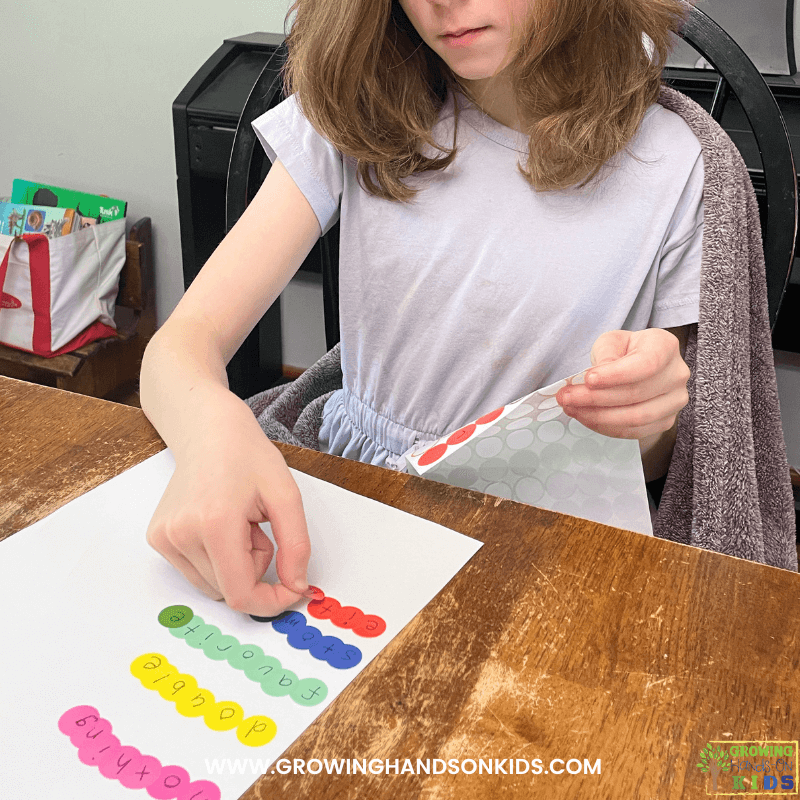
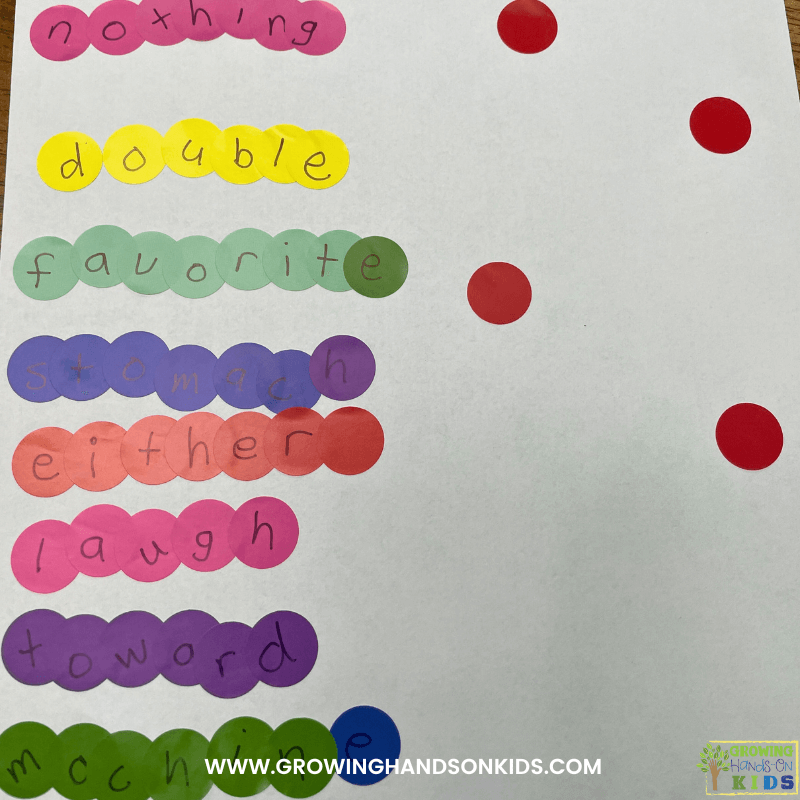
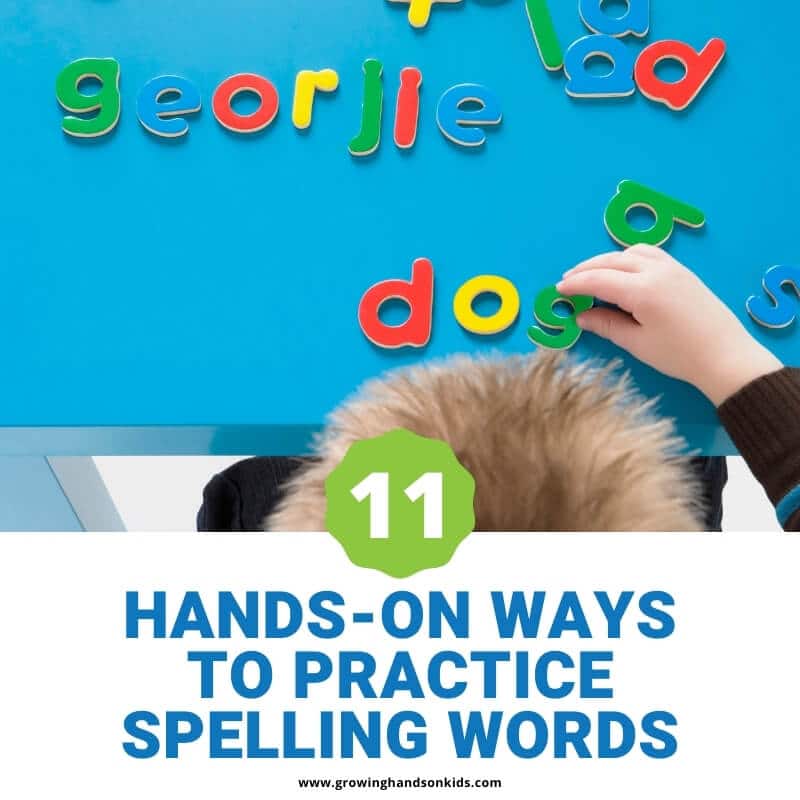
I love this for many reasons. I hadn’t thought about needing to continue to practice this, but seeing as my kindergartner is more comfortable than my first grader cutting things out, I suddenly realize that my first grader needs more fine motor skill practice.
But also love this because I balked at the idea of spelling tests because my kids hate copy work. This is such a fun way to work on spelling and even just their reading skills right now.
I was wondering, do you have a suggested word list for first graders? I can only think to start with sight words that they know but would love a good resource for what words are age appropriate (we’re homeschoolers too).
Hi Brittany, We use the Good and the Beautiful for our literature/English program which includes spelling words. However, I have also used All About Spelling and Spelling U See and both include spelling word lists. I prefer All About Spelling over Spelling U See, but that was just a personal preference. I will be using All About Spelling over the summer with my daughter to help fill in some spelling gaps I’ve noticed since switching to the Good and the Beautiful.